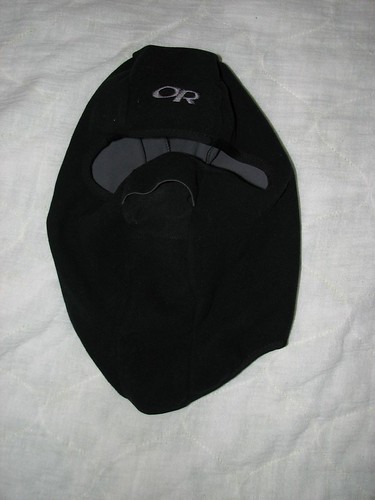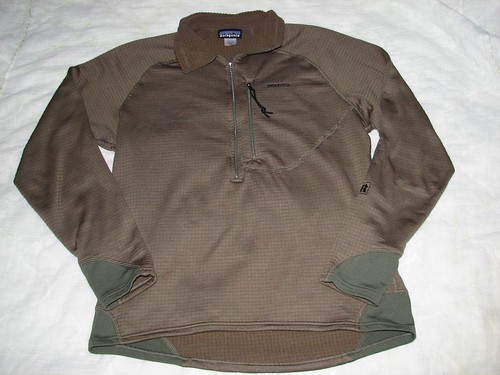In all the time we’ve been here, there’s only been one day that was too cold to even go outside. That was a sub-zero day with high winds in our second week. We’d skied or boarded six days straight and were ready for a day off anyway, so we didn’t venture outside at all that day.
So how have we not only survived but enjoyed our winter at 10,000’? Here we share our secrets…
For Brian, the key to handling a cold day is avoiding all skin exposure. Obviously, that means gloves and a hat and goggles, but how to cover the rest of the face? In January, Brian was just wearing a Turtle Fur neck warmer, but that left a small gap between the goggles and neck warmer. The result of that gap, one very windy January day at Breck, was a case of frostbite on his cheekbone.
We’d seen a lot of people wearing these fleece facemasks that are fitted to the shape of your face and fit right under the goggles. The Seirus Neofleece Combo Scarf is by far the most popular. It seemed like this would solve the gap problem, so Brian ordered one:

This has been a godsend. On days that are mildly cold and windy, Brian is still comfortable. He’d highly recommend it for anyone whose face is cold while skiing or boarding.
But on those single-digit, 40-mph days, the facemask still doesn’t cut it. The wind still hits the space between the facemask and his helmet and chills his ears. For those days, he needs total wind protection, which an Outdoor Research Windstopper Balaclava provides. Brian bought his a while back at one of Outdoor Research’s semiannual sales at the Seattle store a while back and never wore it until this winter:

Having your whole head surrounded by windproof fleece takes some getting used to – it feels suffocating at first. In addition to blocking wind, it also blocks sound, so it’s much harder to hear with the balaclava on. But on a frigid, windy day, nothing can replace a Windstopper balaclava – Brian doesn’t even feel the wind when he’s wearing it. The weather is so changeable here that he’ll often wear either the facemask or the balaclava and carry the other one in a pocket so that he can swap them later depending on the winds.
Brian’s final recommendation was a Christmas present from Sarah this past year – the Patagonia R1 Flash Pullover:

It’s lightweight and warm, and it’s loose enough to fit over two long underwear tops but tight enough that a fleece and a ski jacket can go on top of it. In other words, it’s the perfect midlayer. Brian has also worn it by itself while jogging on a 30-degree day, and it was warm and breathable. This is such a versatile piece of clothing that Brian has worn it almost every day since Christmas. Kinda gross, but true.
For Sarah, staying warm is all about layers, layers, and more layers. On a typical ski day, Sarah might wear six layers on top and four layers on bottom. This is, of course, in addition to mittens or gloves, knee-high ski socks, helmet, neckup, goggles, and a balaclava for cold days.
For layers, Sarah starts with one or two Patagonia base layers, depending on the weather forecast (though the weather forecast around here is notoriously unreliable). A midweight Capilene crew and pants layer well under the Patagonia Capilene 4 top and pants. The Capilene 4 is a waffle material that traps air and is incredibly warm. It’s much appreciated around here in the cold.
Next Sarah adds a layer of fleece on top and bottom. A fleece with a smooth outside works well for layering. The smooth exterior prevents the fleece from binding under a jacket. On top of the fleece goes a Primaloft vest for additional torso warmth.
The final layers are a jacket or two and hard-shell ski pants. The hard shell ski pants are fantastic for keeping dry, especially when snowboarding. Snowboarders spend a lot more time sitting on the ground or kneeling than skiers do, so it is particularly important to have waterproof pants.
For jackets, Sarah starts with a soft shell. This works well for days that aren’t too windy, but is cool when the wind is howling (which is pretty often around here). For those windy days, Sarah puts her hard shell raincoat on top of the soft shell. The extra wind protection adds a lot of additional warmth.
Sarah’s not sure what she’ll do when ski season is over and getting dressed in the morning doesn’t involve putting on a dozen layers. In the meantime, at least she’s warm.
No comments:
Post a Comment